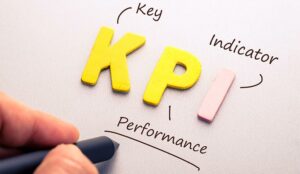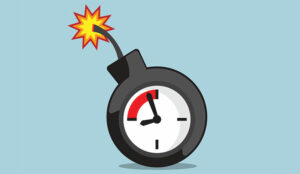Chris Dealy at Injixo explores and defines 34 contact centre KPIs across five categories.
A call centre is a data-rich environment. Compared to many other business functions, contact centres have an embarrassment of readily accessible data that can be used to measure performance. Data is typically collected at regular intervals and at a granular level.
The challenge is often not about finding data for reporting purposes. It is about selecting the set of key performance indicators (KPIs) that are meaningful for your organization and help it to achieve its goals.
“If you can’t measure it, you can’t manage it” is a valuable principle that has been attributed both to Peter F Drucker (the well-respected management thinker) and W Edwards Deming (the father of total quality management). It’s important to avoid the trap of thinking “If you can measure it, you should manage it”.
Contact centres need to measure performance in several dimensions:
- Customer satisfaction
- Employee satisfaction
- Team performance
- Operational effectiveness
- Planning effectiveness
Some of the KPIs could have been assigned to multiple categories, but I’ve not done that to avoid duplication.
Call Centre KPIs for Customer Satisfaction
The purpose of these KPIs is to identify the quality of the customer experience. Failing to deliver on customer experience goals leads to customer churn, loss of revenue, and reputational damage.
- Service Level (SL) the time frame within which a certain percentage of contacts are answered.
- First-Contact Resolution (FCR) the percentage of contacts that are resolved on the first customer approach, without the need for further communication.
- Call Repeat Rate how often do customers reach out to the call centre again with the same issue.
- Net Promoter Score (NPS) customers’ willingness to recommend your company.
- Customer Effort Score (CES) perceived effort customers have to put into resolving their issues.
- Customer Satisfaction (CSAT) overall customer satisfaction following an interaction.
- Abandonment Rate the percentage of callers who hang up while waiting to make contact with an agent.
- Active Waiting Calls the number of calls currently in the queue waiting for a connection.
- Answer Rate the percentage of all contacts either connected to an agent or resolved by a self-service option like IVR (interactive voice response).
- Average Waiting Time the average time a caller spends in the queue before being connected.
- Average Speed of Answer (ASA) the average time it takes for an agent to answer a call.
- Average Hold Time the average time an agent keeps a customer on hold during a call without being productive.
Contact Centre KPIs for Employee Satisfaction
The purpose of these KPIs is to identify the quality of the employee (or agent) experience. Failing to deliver a good employee experience leads to demotivation, poor customer service, and disruptive, costly employee attrition.
- Employee Satisfaction (ESat) how content employees are with their job and work environment
- Employee Net Promoter Score (eNPS) the willingness of employees to recommend their own company as an employer
- Agent Attrition Rate the number of agents leaving the company relative to the total number of employees
- Agent Absenteeism Rate the percentage of hours that agents are not at work due to reasons like sickness or unexplained absences
Contact Centre KPIs for Team Performance
Employees should be satisfied with their jobs but also perform to the level expected by the company and by customers.
- Shrinkage percentage of time when agents are not available to handle contacts because they are engaged in activities like breaks, training, or meetings, vacation, or sick days
- Utilization the ratio of time agents spend on customer contact relative to their paid hours
- Schedule Adherence – team how closely the actual number of agents in their seats matches the planned number
- Schedule Adherence – individual the extent to which individual agents adhere to their shift schedules
- Schedule Conformance how closely the number of hours worked by agents matches the number of scheduled hours
Contact Centre KPIs for Operational Effectiveness
Contact centres need to be organized in such a way that the goals for customer experience, employee experience, and business efficiency can be met simultaneously.
- First Response Time the average minutes or hours between a customer submitting a case and a contact centre agent responding
- Percentage of Rejected Calls how many calls were rejected due to overload
- Average Talk Time (ATT) the average duration of a conversation between an agent and a customer
- Average Handling Time (AHT) the total time an agent takes to handle a call, including talk time and any after-call work (ACW)
- Call Transfer Rate (CTR) how often calls need to be transferred to other departments or agents
- After-Call Work (ACW) Time the time an agent takes after a call to perform necessary updates in the system, like entering customer information into CRM, sending emails, or placing orders
- Average Idle Time the time an agent is available but not handling a call
- Longest Waiting Call the maximum time a customer spent waiting in the queue
- Cost per Call/Contact the monetary cost for each handled call or contact
- Calls Handled per Hour the number of calls handled in an hour
Contact Centre KPIs for Planning Effectiveness
The performance of the planning team is critical to achieving success in all the other areas of contact centre operation.
- Forecast Accuracy measure of how accurate are the predictions of contact volume and AHT
- Schedule Efficiency the extent to which your schedules match customer demand with scheduled employees
- Agent Occupancy Rate the ratio of time agents spent on customer contact tasks to their logged-in hours
How Many Contact Centre KPIs?
In a webinar, Ian Robertson of The Forum cited the renowned psychologist George Armitage Miller, who is famous for his paper The Magical Number Seven, Plus or Minus Two.
This states that a typical human working memory can hold just 7 facts. Some contact centres monitor many more than 7 KPIs. Not only does that go against Miller’s advice, it can be counterproductive.
Human nature dictates that once you realize that you can’t achieve all your KPI goals, you concentrate on the easy ones and neglect the difficult ones, regardless of which have the most value.
The trick is to select the KPIs that have most impact on your business, then do a perfect job of measuring them.
This blog post has been re-published by kind permission of Peopleware – View the Original Article
For more information about Peopleware - visit the Peopleware Website
Call Centre Helper is not responsible for the content of these guest blog posts. The opinions expressed in this article are those of the author, and do not necessarily reflect those of Call Centre Helper.
Author: Peopleware
Published On: 30th Jul 2024 - Last modified: 22nd Oct 2024
Read more about - Guest Blogs, Chris Dealy, Peopleware




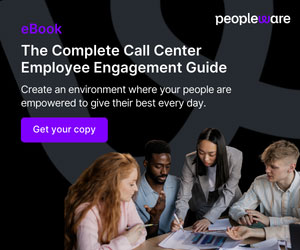
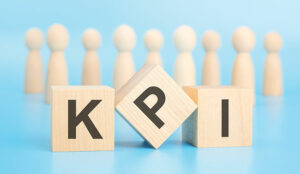
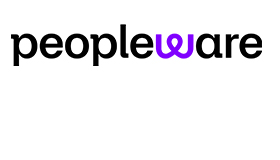 Peopleware is the award-winning, multi-channel cloud workforce management application for contact centers and customer support. Over 300 customers, ranging in size from 50 to over 4,000 seats, trust Peopleware to bring work and demand in perfect balance while embracing the constant change in their business. With Peopleware, you spend less time and effort on manual forecasting and scheduling, while maximizing efficiency and focusing on what really matters: your people and customers.
Peopleware is the award-winning, multi-channel cloud workforce management application for contact centers and customer support. Over 300 customers, ranging in size from 50 to over 4,000 seats, trust Peopleware to bring work and demand in perfect balance while embracing the constant change in their business. With Peopleware, you spend less time and effort on manual forecasting and scheduling, while maximizing efficiency and focusing on what really matters: your people and customers.

